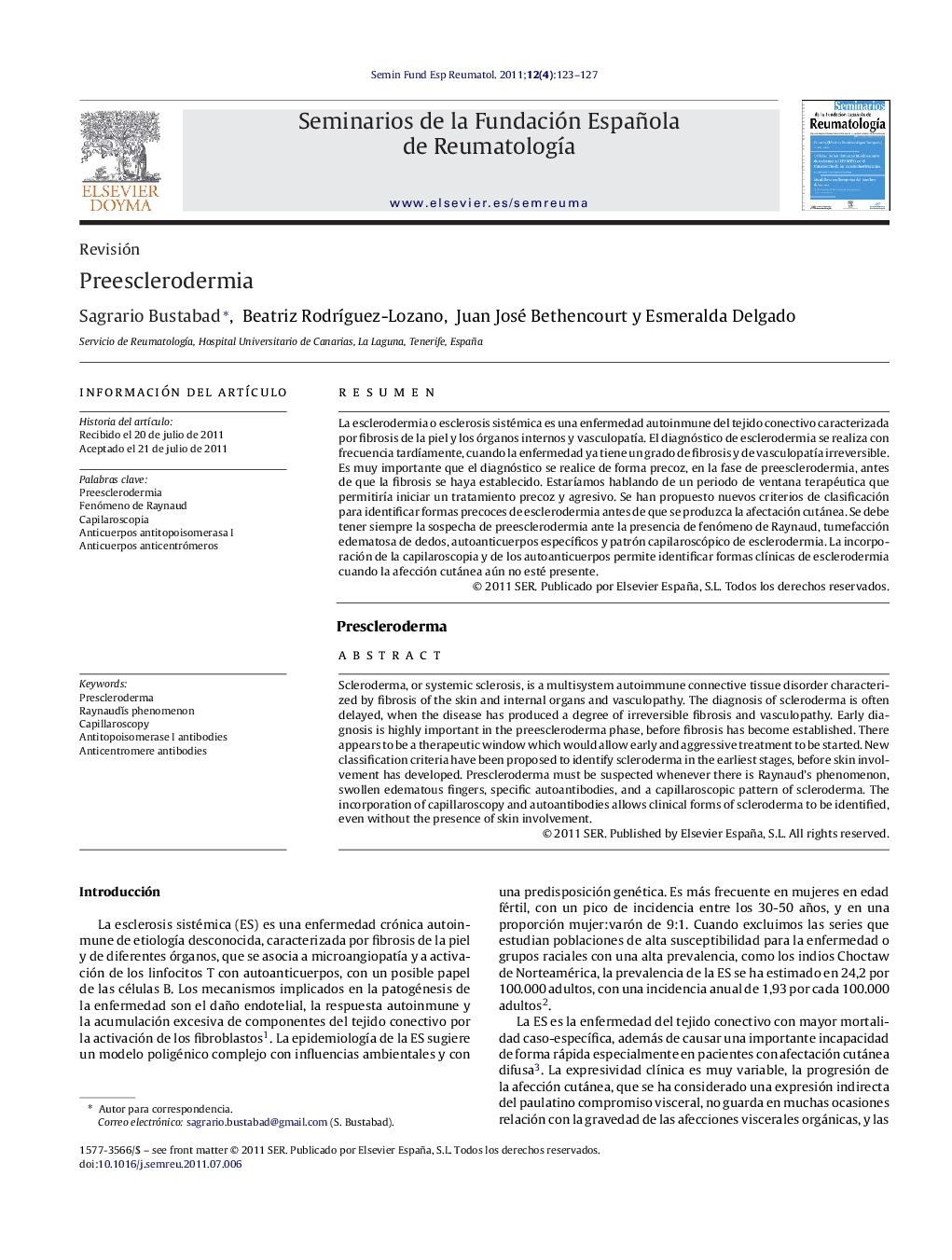| Article ID | Journal | Published Year | Pages | File Type |
|---|---|---|---|---|
| 3391047 | Seminarios de la Fundación Española de Reumatología | 2011 | 5 Pages |
Abstract
Scleroderma, or systemic sclerosis, is a multisystem autoimmune connective tissue disorder characterized by fibrosis of the skin and internal organs and vasculopathy. The diagnosis of scleroderma is often delayed, when the disease has produced a degree of irreversible fibrosis and vasculopathy. Early diagnosis is highly important in the preescleroderma phase, before fibrosis has become established. There appears to be a therapeutic window which would allow early and aggressive treatment to be started. New classification criteria have been proposed to identify scleroderma in the earliest stages, before skin involvement has developed. Prescleroderma must be suspected whenever there is Raynaud's phenomenon, swollen edematous fingers, specific autoantibodies, and a capillaroscopic pattern of scleroderma. The incorporation of capillaroscopy and autoantibodies allows clinical forms of scleroderma to be identified, even without the presence of skin involvement.
Related Topics
Health Sciences
Medicine and Dentistry
Immunology, Allergology and Rheumatology
Authors
Sagrario Bustabad, Beatriz RodrÃguez-Lozano, Juan José Bethencourt, Esmeralda Delgado,
